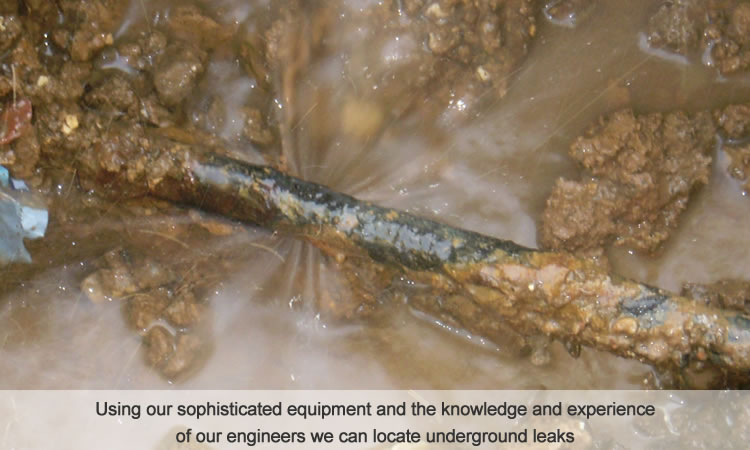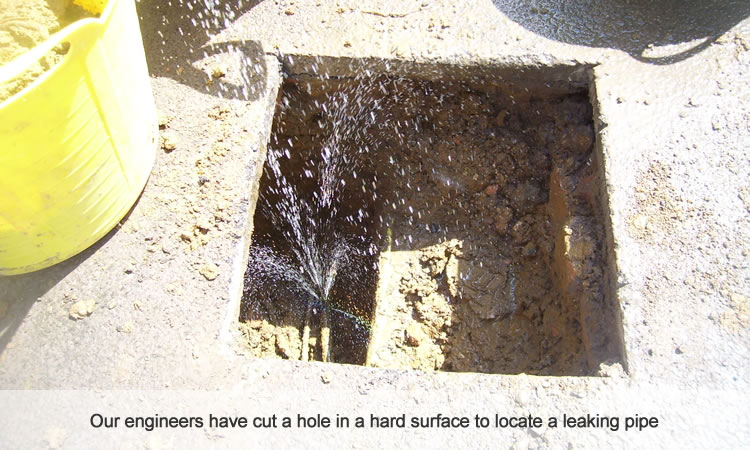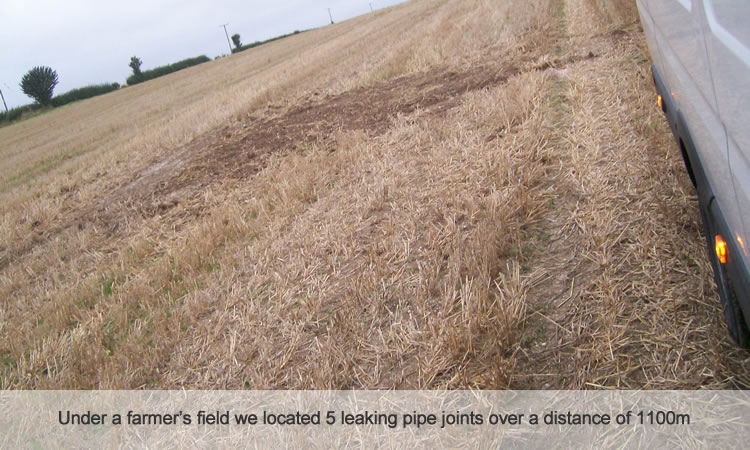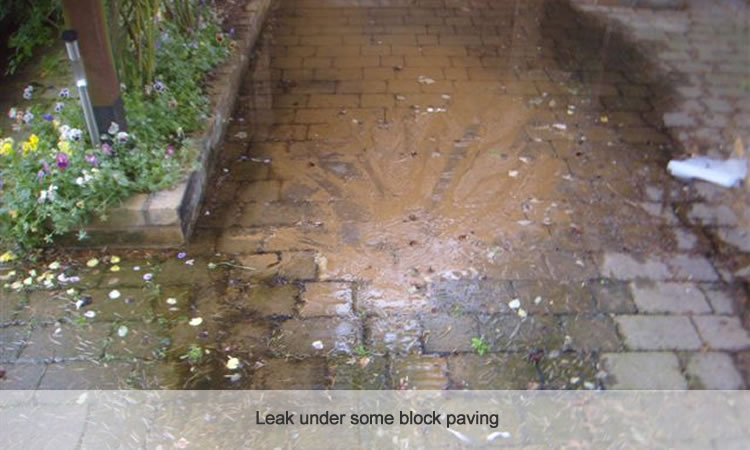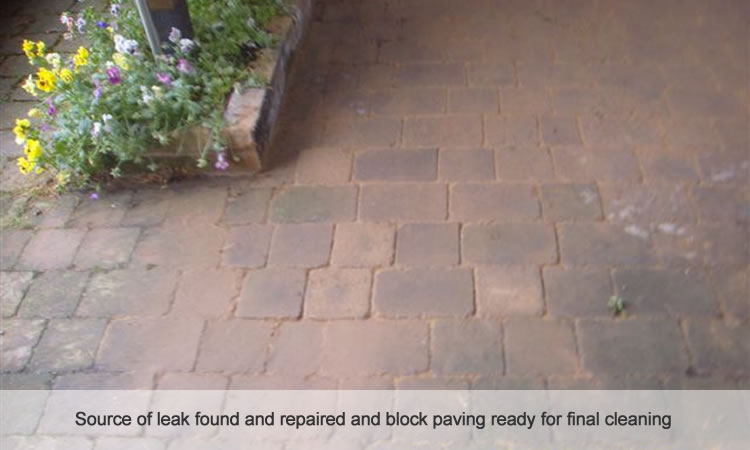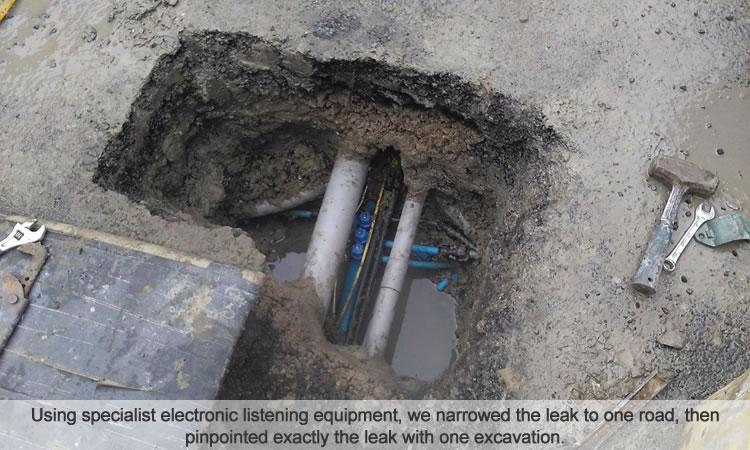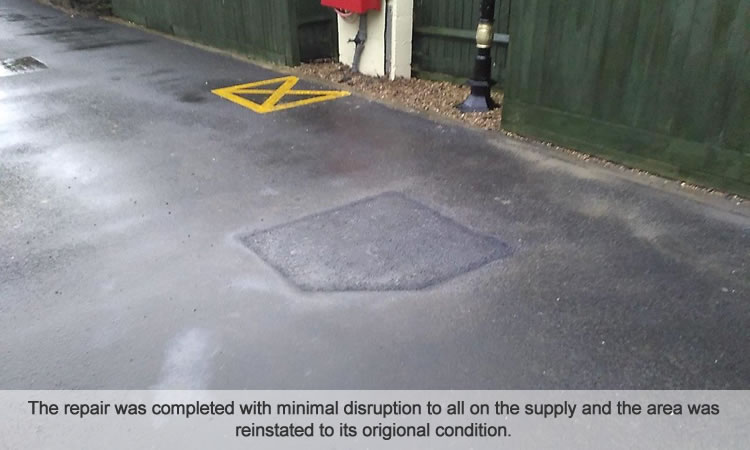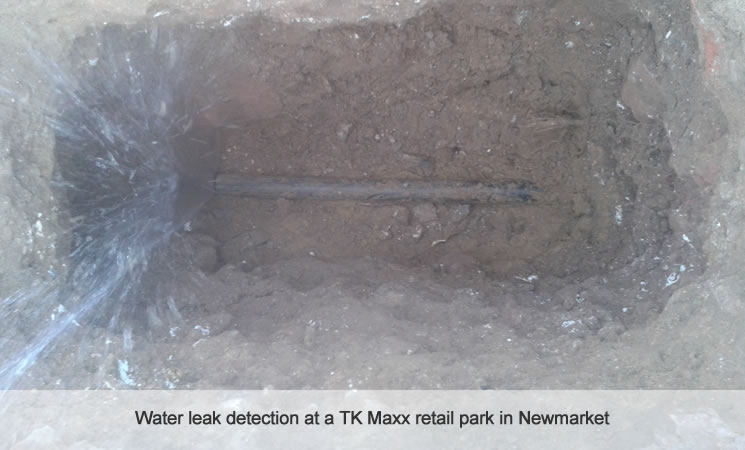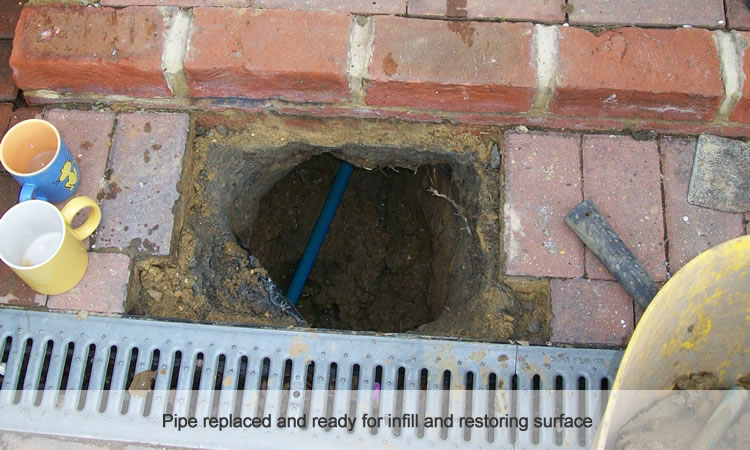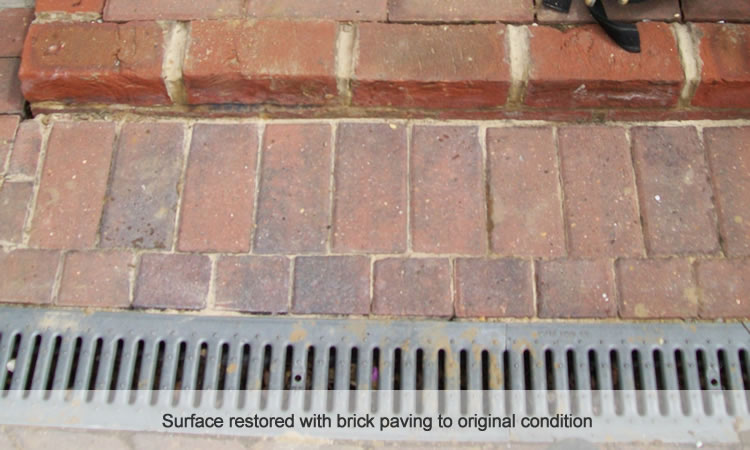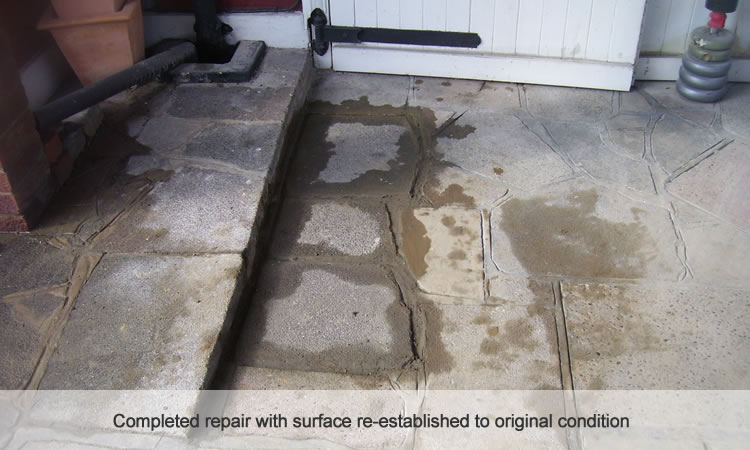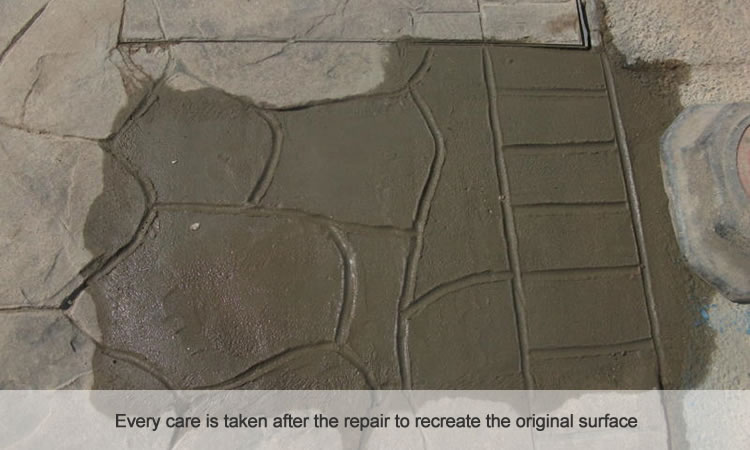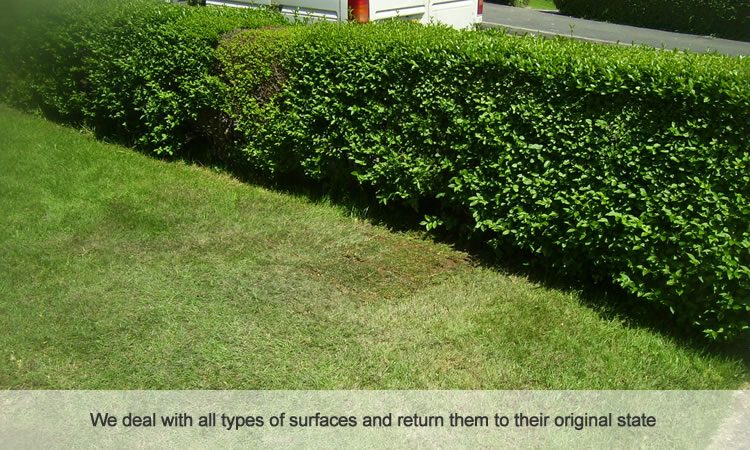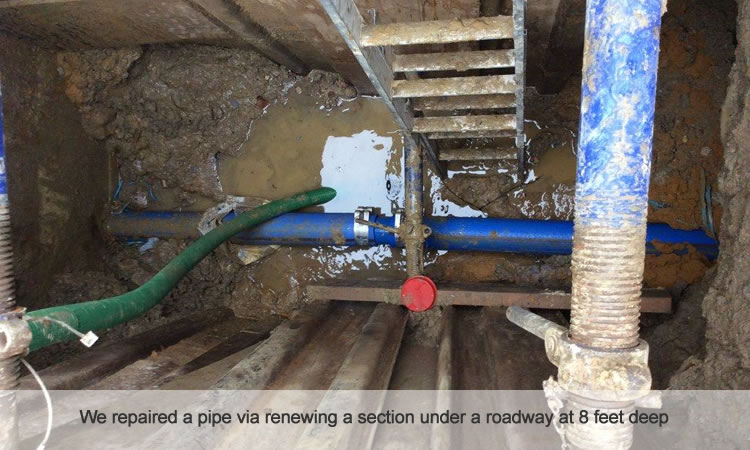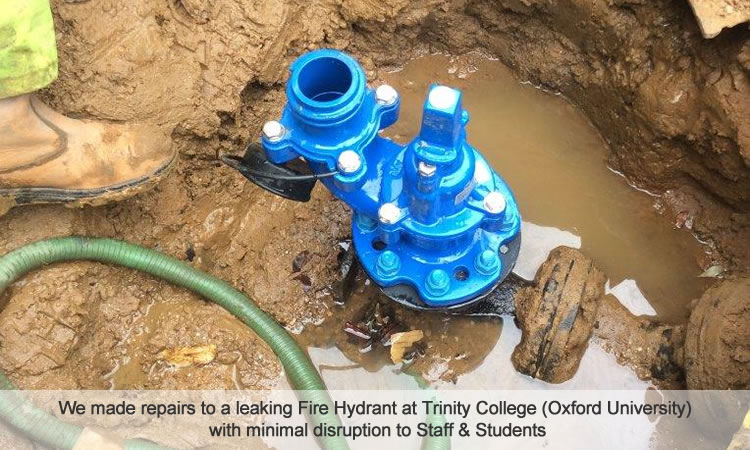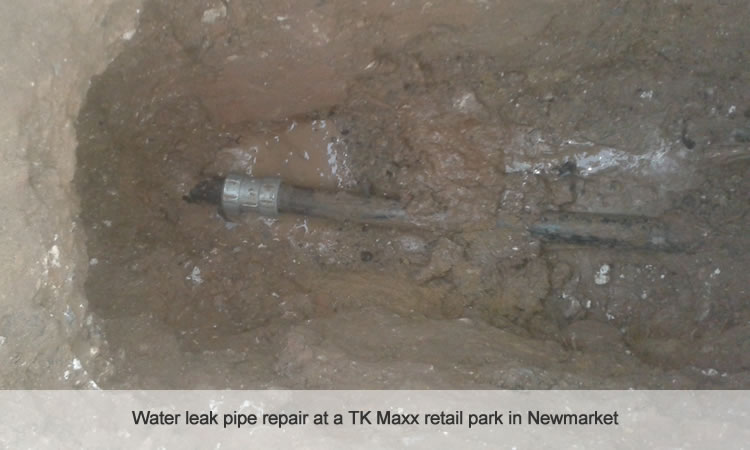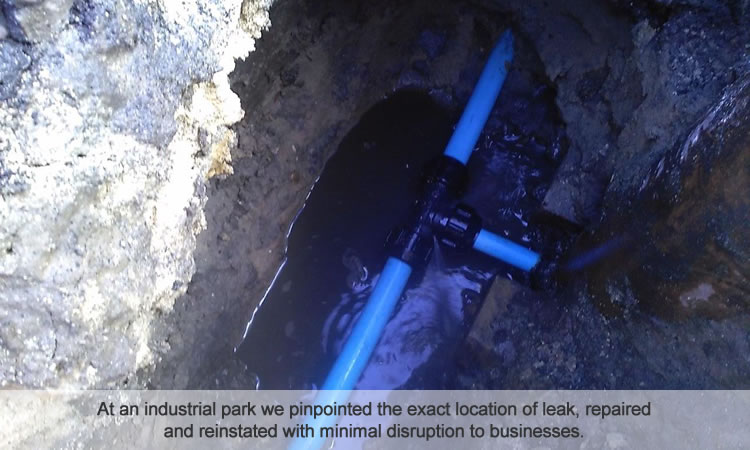Water Leak Detection
Water leaks can cause material damage, create additional consumption costs and reduce water pressure. Before finding non-visible water leaks (water leaks underground) and burst mains pipes, we have to determine where the pipe is. Where the water is seen at the surface may not always indicate where the burst pipe is located.
We have a range of techniques and equipment to detect the location of the water leak.
Pipe Tracing
Metallic pipes can be traced by attaching a signal generator which sends a signal along the length of the pipe and this is detected above ground by a receiver tuned to the same frequency.
Non Metallic Pipes cannot conduct the transmitted signal; this is overcome by
a) Inserting a tracer wire inside the pipe, and sending the signal along the wire, or
b) Using a device to send alternating pressure or sound waves through the pipe, and the sounds are detected above by sensitive ground microphones.
Leak Detection
There are several method used to detect water leaks:
a ) Ground Microphones
When water escapes from a pipe under pressure, it creates a noise — metallic pipes create a higher frequency sound, plastic pipes create a lower sound. These sounds are picked up by extremely sensitive ground microphones, with high and low frequency filters.
b ) Leak Noise Correlation
With correlation, the sound is electronically measured by microphones at two points, (Usually at the boundary stopcock and the internal stopcock). The sounds are assessed by computer and the sound peak is calculated from both points.
c ) Tracer Gas
An inert and harmless tracing gas, usually 95% Nitrogen and 5% Hydrogen is injected into the pipe. Hydrogen molecules are extremely small, and as they exit via the leak , they rise and permeate through the layers above, whether soil, concrete or tarmac. They can then be detected by extremely sensitive sensors, thus indicating the area of leakage
d ) Pipe Stopping (only for smooth bore pipes)
A small air bag is inserted along the pipe internally, then inflated to seal the pipe. That section of pipe is then pressurised by air, and if holds the pressure, there is no leak; if the pressure reduces, the leak is in that section. The air bag is repeatedly repositioned to give an accurate indication, often to within a few inches, of where the leak is.
Each of the above methods, unfortunately, have limitations, which are triggered by the differing conditions of each site; we may have to use several methods together. With our 36 years experience, though, we have a very high success rate.
Water Mains Repair
We utilise specialist leak detection equipment and techniques to help locate the point of leakage on your water supply pipe. Once we have located the area of leakage, our experienced engineers will then assess the most effective and economic way to stop the leakage on your water supply.
Although conditions are often quite poor due to the water pipe leakage, our engineers are always very careful to respect and protect our customers’ property. Excavated spoil is either put onto ground sheets, or into containers, to minimise soiling the surfaces.
When the water mains pipe repair is completed, the excavated soil is re-used, if suitable, or removed from site.
Our engineers are also trained in the reinstatement of all surfaces, so that the mains repair will usually be completed in one visit. Should ground conditions be very poor and the affected area be used by pedestrians or vehicles, we will either use fresh backfill material or use soil stabiliser, which firms up wet spoil.

